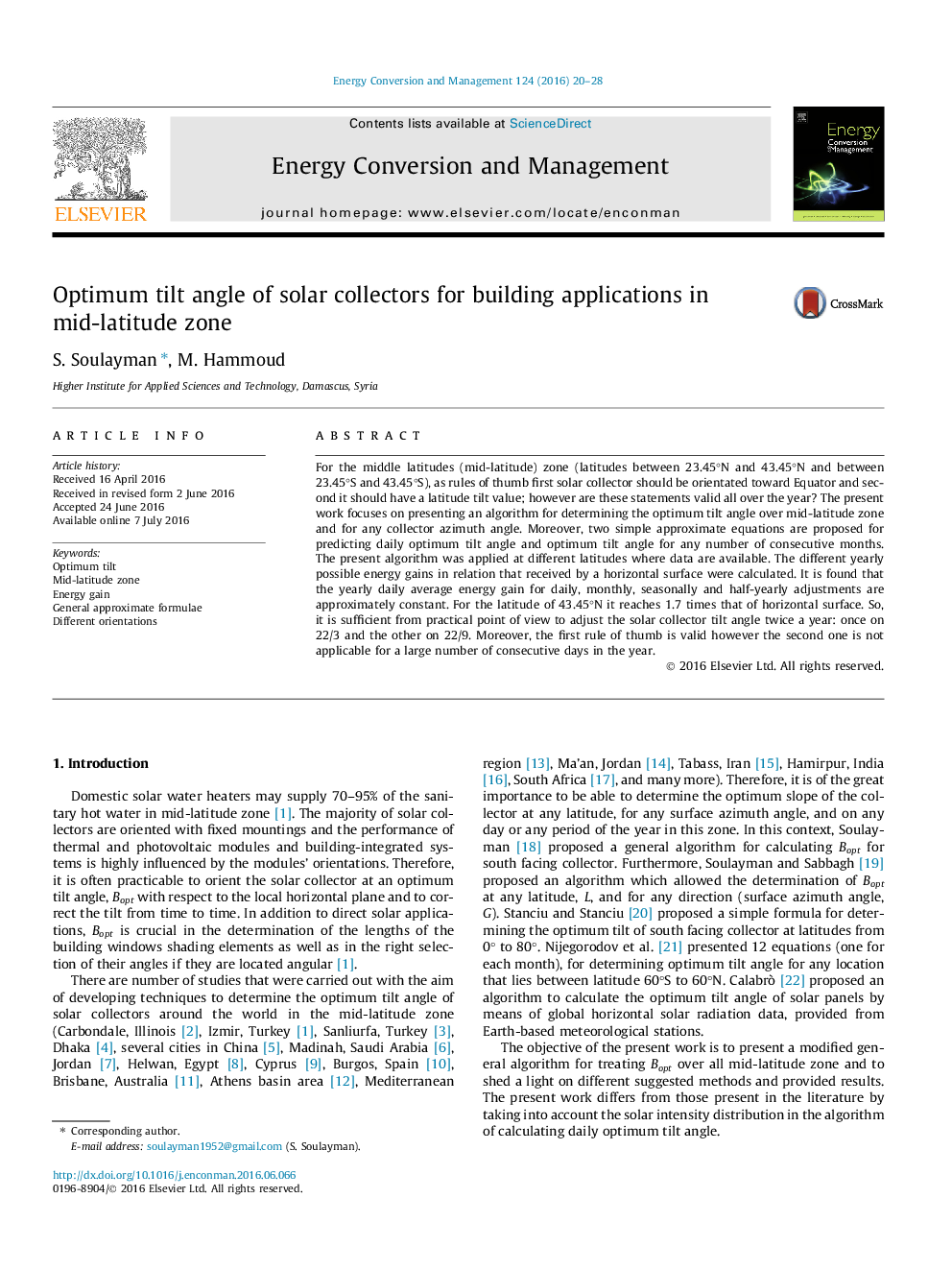| کد مقاله | کد نشریه | سال انتشار | مقاله انگلیسی | نسخه تمام متن |
|---|---|---|---|---|
| 764977 | 1462838 | 2016 | 9 صفحه PDF | دانلود رایگان |
• General algorithm for calculating optimum tilt in the mid-latitude zone is proposed.
• General approximation is proposed for calculating optimum tilt Bopt,p over a period.
• Optimum tilt for different orientations is calculated.
• Energy gain is a valuable criterion for determining yearly tilt adjustment number.
• Adjusting solar collector tilt twice a year is practically sufficient.
For the middle latitudes (mid-latitude) zone (latitudes between 23.45°N and 43.45°N and between 23.45°S and 43.45°S), as rules of thumb first solar collector should be orientated toward Equator and second it should have a latitude tilt value; however are these statements valid all over the year? The present work focuses on presenting an algorithm for determining the optimum tilt angle over mid-latitude zone and for any collector azimuth angle. Moreover, two simple approximate equations are proposed for predicting daily optimum tilt angle and optimum tilt angle for any number of consecutive months. The present algorithm was applied at different latitudes where data are available. The different yearly possible energy gains in relation that received by a horizontal surface were calculated. It is found that the yearly daily average energy gain for daily, monthly, seasonally and half-yearly adjustments are approximately constant. For the latitude of 43.45°N it reaches 1.7 times that of horizontal surface. So, it is sufficient from practical point of view to adjust the solar collector tilt angle twice a year: once on 22/3 and the other on 22/9. Moreover, the first rule of thumb is valid however the second one is not applicable for a large number of consecutive days in the year.
Figure optionsDownload as PowerPoint slide
Journal: Energy Conversion and Management - Volume 124, 15 September 2016, Pages 20–28
